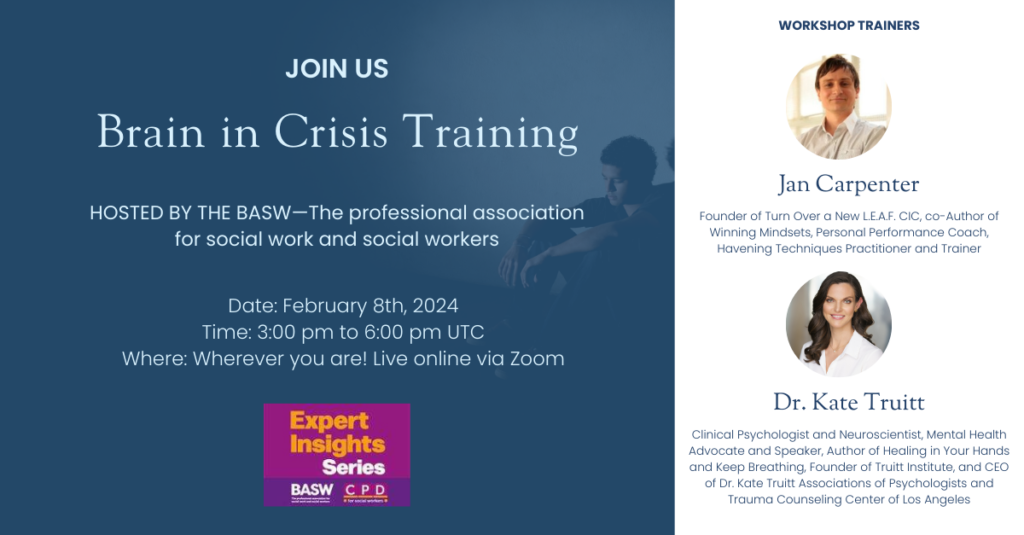Related Resources
For Havening Techniques®
A Self Havening Guided Meditation for Embracing Gratitude
In this guided meditation for embracing gratitude you can explore your relationship with gratitude and deepen your appreciation for it. What if your exhales can be a source of spreading gratitude for the rest of the world?
As clinicians, we often extend our compassion to patients, but it is equally important to direct some of that kindness inward. Self-compassion involves treating ourselves with the same kindness, understanding, and support that we would offer to others. When we are kind to ourselves, we become better equipped to provide compassionate care and support to our patients. By modeling self-compassion, we inspire others to adopt the same attitude toward themselves.
A Guided Meditation for Self-Compassion and Caring
I invite you to explore this guided meditation for self-compassion and caring to connect with your inherent sense of self-love, compassion, and caring, and to share these experiences with the world around you.
Positive affirmations can help us challenge self-doubt, build confidence, and nurture a positive outlook. By reinforcing positive beliefs about ourselves and our abilities, we can approach our work and interactions with patients and colleagues from a place of strength and optimism. This positive mindset can create a positive ripple effect that extends to those we work with and care for.
Ripple Effect of Positivity: Empowering Advocates to Inspire Change
By Dr. Kate Truitt
Have you ever stopped to think about the profound impact a single positive action or word can have? This is something I continue to see in my work, socials, and interactions with clients, colleagues, and even strangers. It’s truly incredible how something so simple has the power to create a ripple effect, inspiring others and leading them to meaningful change. That’s why it’s important to recognize that positivity has the unique ability to create a ripple effect that can take root in communities, organizations, and even society as a whole.
In this blog, we’ll we will explore the ripple effect of positivity and how clinicians can tap into their role as advocates to activate transformative change.
What is the Ripple Effect of Positivity?

Imagine dropping a single pebble into a calm pond. As the pebble breaks the water’s surface, it creates a series of ripples that expand outward, affecting every area it touches. In a similar way, positivity can have a ripple effect on our lives and the lives of those around us. The ripple effect refers to the concept that a single positive action or word can create a chain reaction of positive outcomes. It’s the idea that the energy we put out into the world has the power to influence and inspire others.
The Neuroscience of Positivity
Numerous studies have shown that positive emotions have a range of beneficial effects on physical health, cognitive functioning, and overall well-being. Researchers have found that positive emotions activate specific regions of the brain, including the prefrontal cortex and the limbic system, which are associated with reward processing and emotional regulation. These regions release neurotransmitters such as dopamine and endorphins, which contribute to feelings of pleasure, motivation, and well-being.
Studies conducted using neuroimaging techniques, such as functional magnetic resonance imaging (fMRI), have revealed that positive emotions have an impact on brain structure and function. For example, long-term engagement in positive emotions and well-being has been associated with increased gray matter volume in brain areas involved in emotional regulation, such as the prefrontal cortex and the amygdala.
Furthermore, research suggests that individuals who experience higher levels of positive emotions tend to have increased resilience and better stress-coping mechanisms. Positive emotions can buffer against the negative effects of stress, promote social connection, and foster an optimistic outlook on life.
Clinicians as Catalysts for Change

Clinicians have a unique position of influence, allowing them to amplify the reach of positive advocacy. By embracing our role as advocates for wellbeing, we can drive meaningful change within our practices and beyond.
- Personal Practices
We can start by incorporating positive practices into our own lives. By mindfully practicing gratitude, self-compassion, and positive affirmations, we can cultivate a positive mindset that positively impacts their interactions with patients, colleagues, and the broader community.
Taking a moment each day to reflect on and express gratitude can have a profound impact. By acknowledging and appreciating the positive aspects of our lives, we tune in to the goodness around us. Expressing gratitude can make us more attentive, empathetic, and compassionate, allowing us to establish deeper connections and create a positive environment.
In this guided meditation for embracing gratitude you can explore your relationship with gratitude and deepen your appreciation for it. What if your exhales can be a source of spreading gratitude for the rest of the world?
As clinicians, we often extend our compassion to patients, but it is equally important to direct some of that kindness inward. Self-compassion involves treating ourselves with the same kindness, understanding, and support that we would offer to others. When we are kind to ourselves, we become better equipped to provide compassionate care and support to our patients. By modeling self-compassion, we inspire others to adopt the same attitude toward themselves.
I invite you to explore this guided meditation for self-compassion and caring to connect with your inherent sense of self-love, compassion, and caring, and to share these experiences with the world around you.
Positive affirmations can help us challenge self-doubt, build confidence, and nurture a positive outlook. By reinforcing positive beliefs about ourselves and our abilities, we can approach our work and interactions with patients and colleagues from a place of strength and optimism. This positive mindset can create a positive ripple effect that extends to those we work with and care for.
- Building Positive Relationships
Through compassionate and empathetic care, clinicians can foster positive relationships with patients. By acknowledging our patients’ strengths and celebrating their progress, we contribute to a ripple effect of positivity, encouraging patients to embrace healthy behaviors and inspiring others around them.
- Advocacy and Education
The ripple effect amplifies when clinicians use knowledge and skills to empower others. We can leverage our expertise and influence to advocate for positive change on a larger scale. This can involve developing educational resources, conducting workshops, or engaging in community initiatives focused on mental health, wellness, and positivity.
For more educational resources for clinicians and healing workshops, please visit the training branch of Dr. Kate Truitt & Associates, A Psychological Corporation: www.truittinstitute.com.
cONCLUSION

As clinicians, our unique position gives us the opportunity to amplify the reach of positive advocacy, encouraging patients and colleagues along their own transformative journeys. We can harness the ripple effect of positivity and create a world where change begins with a single positive action.
For clinicians, check out the following workshops and trainings to help you in empowering your clients:
Brain in Crisis Training hosted by BASW—The professional association for social work and social workers: Gain tools and skills to help you and help others prevent having a brain in crisis and build lasting changes in the brain to empower and move forward.
If you’re looking for additional mental health resources for you or for your clients:
- Pre-Order my book, Keep Breathing: A Psychologist’s Intimate Journey Through Loss, Trauma, and Rediscovering Life. Part memoir and part scientific exploration, it’s my personal account of profound loss, grief, and life’s challenges, as well as the highs and lows of my healing journey.
- Grab your copy of my book, Healing in Your Hands. Within its pages are tools we can use to partner with our brain so we can heal the past, create the present, and build the future we want.
- Visit our YouTube channel for more psychoeducational and guided meditation videos
- Connect with me on TikTok where I post daily videos answering questions about mental health, psychology, and trauma.
References
- Alexander, R., Aragón, O. R., Bookwala, J., Cherbuin, N., Gatt, J. M., Kahrilas, I. J., Kästner, N., Lawrence, A., Lowe, L., Morrison, R. G., Mueller, S. C., Nusslock, R., Papadelis, C., Polnaszek, K. L., Helene Richter, S., Silton, R. L., & Styliadis, C. (2021). The neuroscience of positive emotions and affect: Implications for cultivating happiness and wellbeing. Neuroscience & Biobehavioral Reviews, 121, 220-249. https://doi.org/10.1016/j.neubiorev.2020.12.002
- Michael, B. (2010) The Neuroscience of Happiness. Greater Good Magazine. https://greatergood.berkeley.edu/article/item/the_neuroscience_of_happiness












